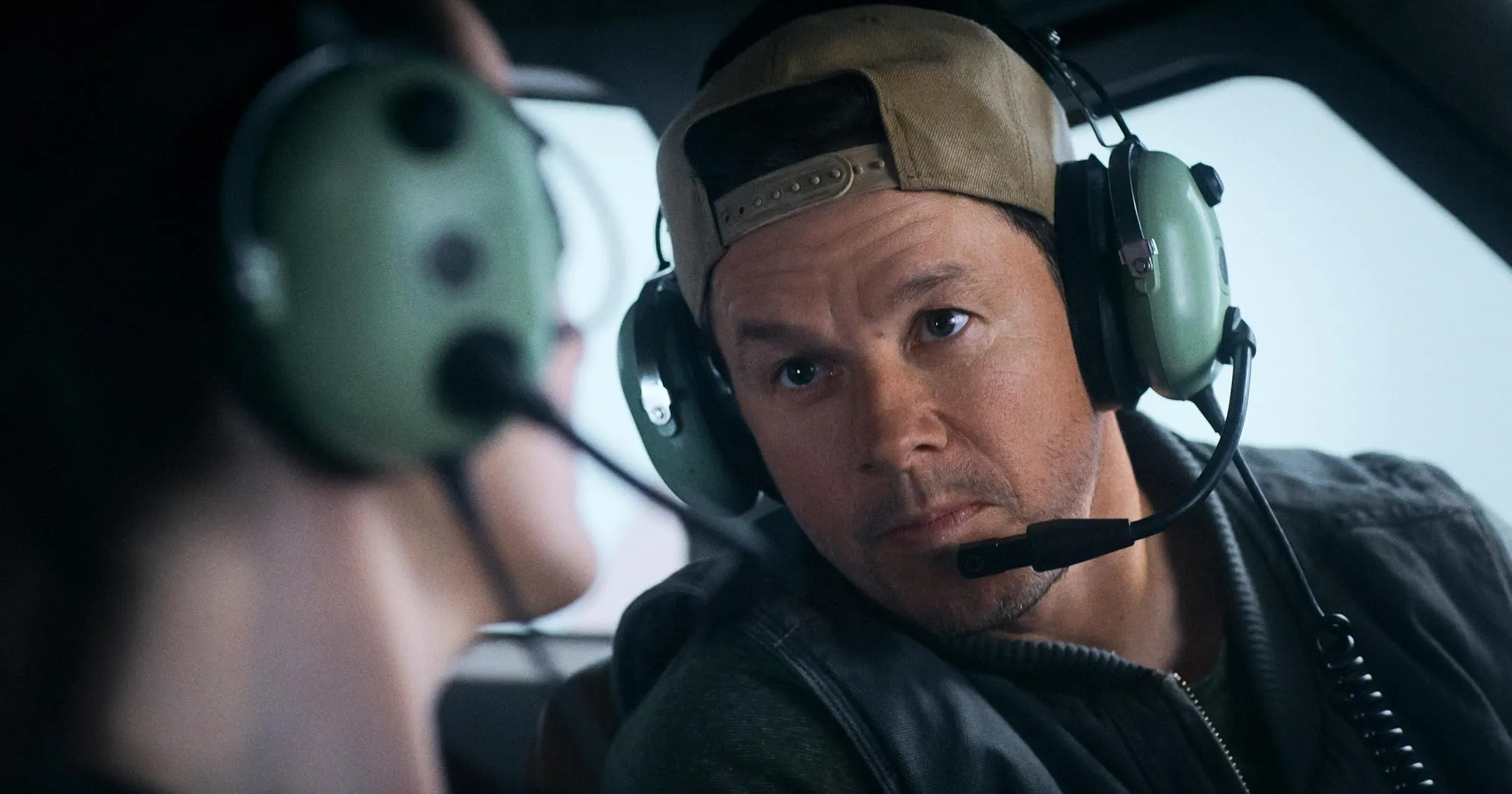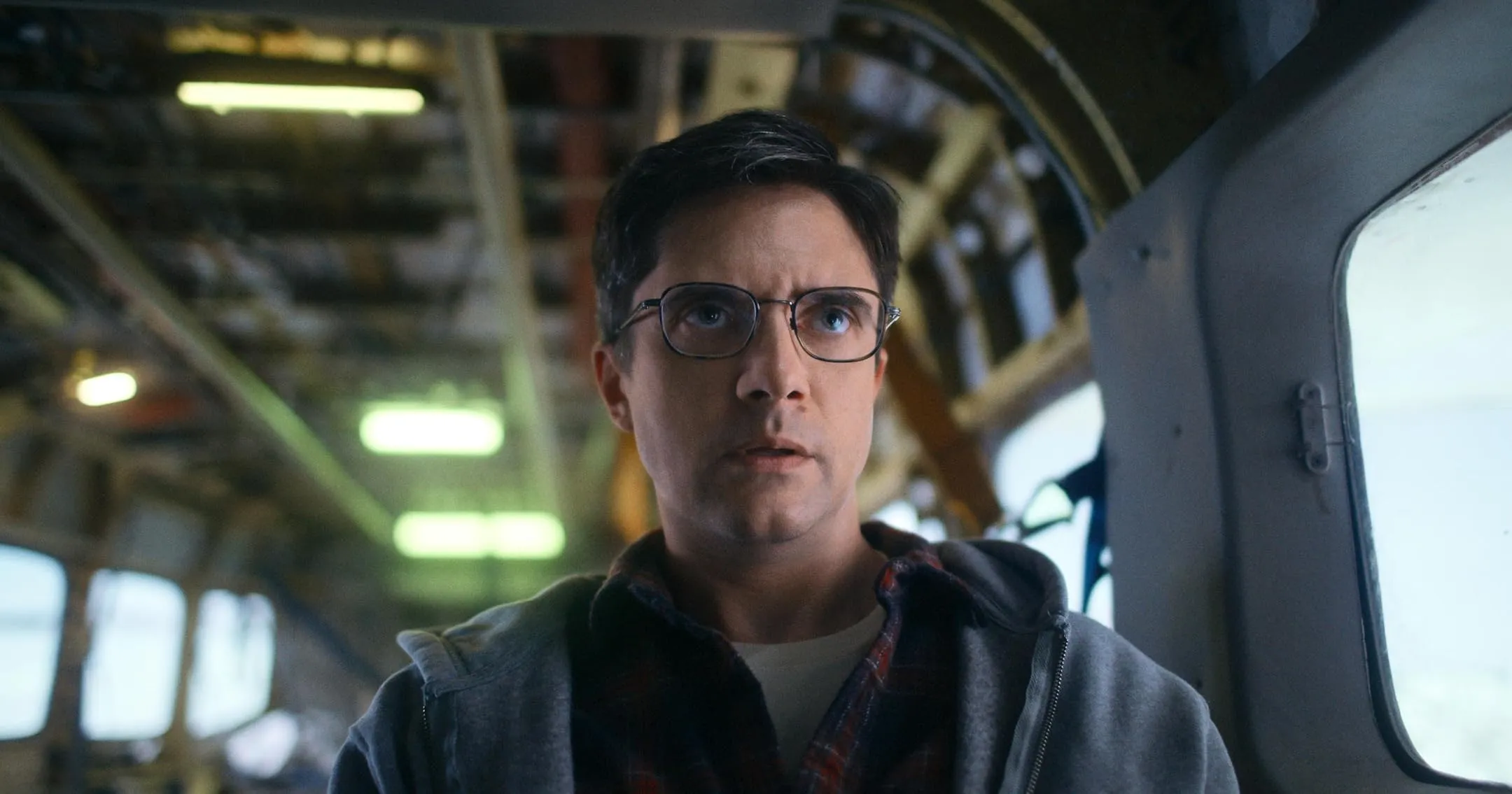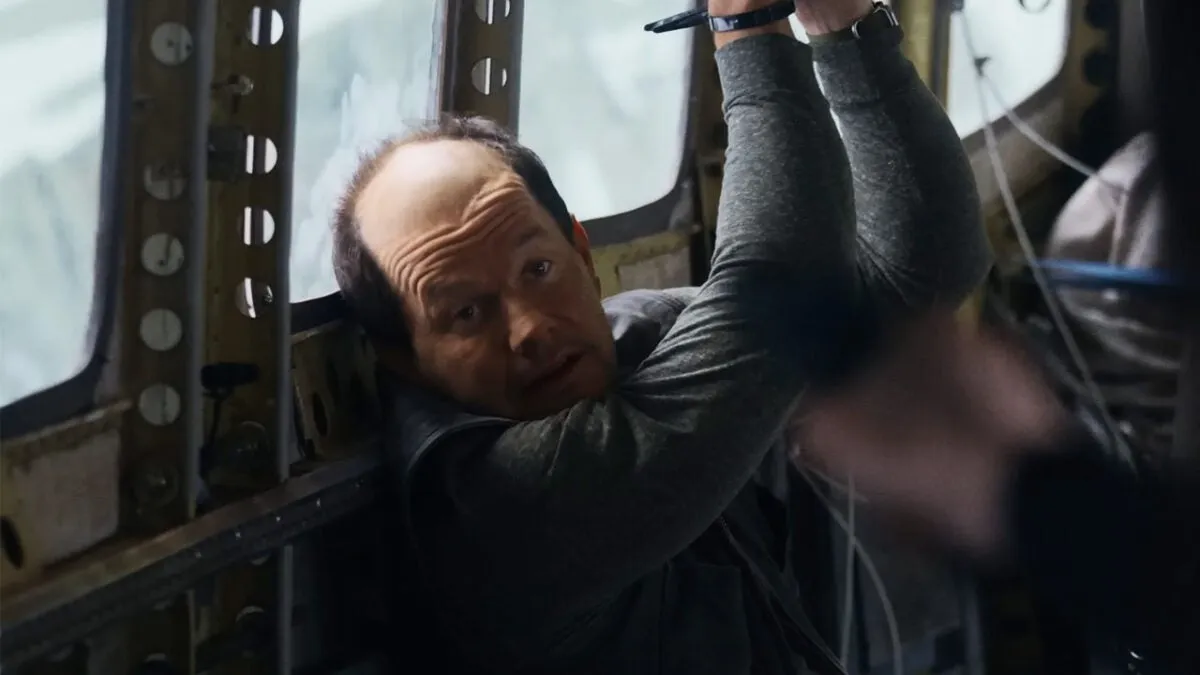Flight Risk transforms a confined Cessna into a stark reflection of modern societal tension. U.S. Marshal Madelyn Harris (Michelle Dockery) transports mob informant Winston (Topher Grace) with pilot Daryl (Mark Wahlberg), whose aggressive demeanor crackles through threatening dialogue.
The plane, suspended over Alaskan emptiness, becomes a crucible for disintegrating trust and fragile control. Gibson’s direction oscillates between raw intensity and uneven storytelling, highlighting primal tensions: Wahlberg’s aggressive physicality contrasts with Dockery’s measured performance, while Grace embodies a nervous energy teetering between humor and desperation.
The malfunctioning navigation systems suggest deeper communication breakdowns. Alaska’s stark landscape emphasizes human vulnerability. Wahlberg’s character reveals masculinity’s performative nature—a facade masking deep insecurities. Survival emerges not through heroic action but random chance. The film captures a moment where human connections strain under extreme pressure, reflecting contemporary anxieties about unpredictability and interpersonal mistrust.
Human Cargo: Performances as Parables of Power
Mark Wahlberg portrays Daryl Booth as a deeply unlikable screen presence—a snarling caricature wearing a backwards baseball cap. His acting style embraces every stereotype of volatile masculinity, sporting a toupee that signals fragile self-perception and a drawling speech pattern that quickly collapses.
Wahlberg’s physical performance—with flared nostrils and clenched jaw—resembles an aggressive animal restrained (in this case, duct-taped to an airplane seat). The character reveals something darker: Daryl’s violent threats and predatory undertones reflect societal acceptance of aggressive behaviors seen in online antagonists with professional credentials.
Michelle Dockery plays Madelyn Harris as a weary U.S. Marshal wrestling with systemic challenges. Her portrayal suggests someone perpetually managing institutional breakdowns. Her accent—imperfectly American—subtly highlights her character’s internal conflicts: a British performer depicting an American professional navigating complex moral terrains. Her character arc moves through difficult choices, oscillating between compassion and pragmatic survival.
Topher Grace’s Winston emerges as an unexpected narrator, a nervous character caught in circumstances beyond his control. His rapid jokes and self-deprecating humor represent generational responses to overwhelming stress. Grace captures a nuanced journey from apparent weakness to unexpected resilience, embodying how younger generations confront unpredictable challenges.
These characters sketch a raw portrait of human complexity—exposed, struggling, imperfect.
Cabin Pressure: Gibson’s Claustrophobic Calculus
Mel Gibson’s direction in Flight Risk explores contained tension—a stark shift from his earlier sprawling, epic works (Braveheart, Apocalypto) that defined his directorial style.
The Alaskan Cessna transforms into a crucible of human desperation, its tight quarters intensifying the raw emotional landscape. Battle sequences fade; instead, unease builds through Wahlberg’s subtle muscular twitches and Dockery’s white-knuckled control of the aircraft.
The plane’s interior—a grimy metal shell with worn upholstery—becomes both constraint and character. Gibson manipulates spatial restrictions: camera angles tilt unpredictably, matching the aircraft’s unstable trajectory, while eliminating external perspectives locks viewers into immediate dread.
Gibson’s cinematic approach reveals structural limitations. Wahlberg’s performance feels exaggerated—a volume level too high for the intimate setting. The cabin’s constricted environment, intended to reflect contemporary social tensions, occasionally slides toward theatrical melodrama.
Occasional narrative moments shine through the constraints. Power dynamics shift between law enforcement, criminal, and aggressor—reflecting broader societal fragmentation. Character interactions during survival moments suggest deeper commentaries on competition and individual survival instincts. Yet Wahlberg’s overwrought dialogue frequently punctures the mounting suspense.
The aircraft itself emerges as a metaphorical vessel—straining under internal pressures, moving toward an uncertain resolution.
Altitude Sickness: The Script’s Turbulent Descent
The screenplay of Flight Risk unfolds like a precarious balancing act—a thriller that confines three individuals within a metal container racing toward potential doom.
Jared Rosenberg’s concept—blending claustrophobic tension with high-stakes drama—initially captivates, using confinement as both physical space and psychological pressure point. Dialogue sparks in select moments: Wahlberg’s Daryl delivers threats with intense precision, while Grace’s Winston wields dark humor with sharp wit.
Their interactions pulse with transactional tension, reflecting contemporary communication patterns—each statement a calculated move, each pause pregnant with unspoken conflict.
The script struggles under narrative strain. Characters make perplexing choices that challenge credibility: Madelyn, a trained marshal, overlooks basic security protocols, while Daryl’s strategy relies on improbable circumstances. These narrative lapses create substantial credibility gaps.
The real-time structure, initially intriguing, becomes sluggish once Wahlberg remains immobilized, causing narrative momentum to stall. The tonal shifts—violent threats juxtaposed against crude humor—create a disorienting viewing experience that reflects current media consumption patterns.
Rosenberg’s script fails to synthesize its disparate elements. What might have been a sharp critique of societal breakdown becomes a scattered exploration of human behavior under extreme stress.
The film represents a missed opportunity to explore systemic failures and interpersonal dynamics within a compressed, high-pressure environment.
Pixelated Wilderness: When CGI Eclipses Authenticity
The CGI moose in Flight Risk emerges as a digital apparition—a visual anomaly that haunts the film’s opening sequence.
Its awkward movement and synthetic texture recall early video game animations, creating a stark contrast against the rugged Alaskan landscape. This digital creature inadvertently symbolizes the film’s core tension: the clash between manufactured imagery and raw experience.
Continuity errors pepper the narrative like scattered fragments. Dockery’s injuries mysteriously shift between scenes, while Wahlberg’s handcuffs fluctuate between industrial-grade restraints and what seems like a cheap prop. The plane’s interior vacillates between gritty realism and sterile artificiality, with duct-taped seats and weathered panels suggesting a makeshift aesthetic.
The Alaskan wilderness, captured through expansive drone perspectives, stands as a monolithic backdrop—indifferent to human struggles. The aircraft, assembled from disparate elements, reflects societal improvisation when confronting challenges. Gibson’s focus on a thermos sliding across the cockpit floor transforms a mundane moment into something quietly philosophical.
This cinematic experience serves as a twisted mirror of contemporary visual culture. In an era where digital manipulation blurs perception, Flight Risk’s imperfect effects suggest a world where authenticity becomes increasingly negotiable. The CGI moose might just transform into an unexpected symbol—a strange emblem of our increasingly synthetic reality.
Sky-High Paradoxes: When Laughter Meets Desperation at 30,000 Feet
The cramped confinement of Flight Risk’s aerial prison transcends physical boundaries. The aircraft, a tightly packed space of fraying emotions, transforms into a breeding ground for post-pandemic tensions: closeness without genuine connection, peril without reprieve.
Madelyn’s commanding presence, Winston’s desperate negotiations, and Daryl’s aggressive posturing reveal survival tactics amid institutional breakdown. Their deep distrust reflects widespread skepticism toward structures claiming to protect but delivering unpredictability. Survival emerges not as heroism, but as calculated risk—a reflection of precarious economic realities.
The narrative tone oscillates erratically. Wahlberg’s aggressive rhetoric clashes with Grace’s crude humor—a dissonance reminiscent of chaotic digital media consumption. The film’s abrupt transitions from intense thriller to comedic sequences suggest an unintentional exploration of contemporary media’s volatile nature. Dockery’s mid-crisis radio interaction seems almost surreal—a stark representation of connection stripped to its most mechanical elements.
These unexpected contrasts inadvertently capture societal fragmentation. The plane’s confined world—where terror and comedy coexist without clear resolution—reflects our current cultural landscape, where extreme experiences blur into a strange, interconnected tapestry.
Final Descent: Turbulence Without Triumph
Flight Risk sputters as a B-movie tale and crashes as coherent cinema. Its core strengths emerge from Wahlberg’s wild performance (a bald cap showcase) and the confined premise’s raw energy—a tense scenario trapped in a pressurized cabin.
The restricted setting starts electrifying but quickly stalls, its real-time structure feeling like an endless meeting. Gibson’s direction creates sporadic tension but cannot rescue a script that confuses shock with depth.
The film’s chaotic nature reflects current social fragmentation—a moment when institutional trust collapses dramatically. Wahlberg fans or those enjoying melodramatic spectacle might find entertainment. For others, it remains forgettable—like bland airline snacks consumed without thought.
In the genre of confined thrillers, it lacks the precision of similar works. Its wildly uneven approach suggests a cinematic experiment that barely stays airborne. The film exists as a weird artifact—a messy creation that challenges polished streaming content with its rough-edged weirdness.
The Review
Flight Risk
"Flight Risk" crashes dramatically, failing to capitalize on its intriguing high-altitude premise. The film struggles with erratic storytelling and a performance by Wahlberg that veers into excessive melodrama. Directorial choices by Gibson oscillate between momentary tension and sluggish pacing. Attempts to explore deeper narrative themes get lost amid inappropriate humor and absurd visual spectacles. While the movie might attract viewers seeking unintentional entertainment, it ultimately delivers a disjointed cinematic experience that feels more like a bumpy, uncomfortable journey than a compelling thriller.
PROS
- High-concept premise with claustrophobic tension.
CONS
- Jarring tonal shifts (thriller/comedy whiplash).
- Illogical script riddled with plot holes.
- Dockery’s underdeveloped, inconsistent protagonist.
- Dated CGI (the infamous moose).
- Themes drown in crass dialogue and missed opportunities.





















































